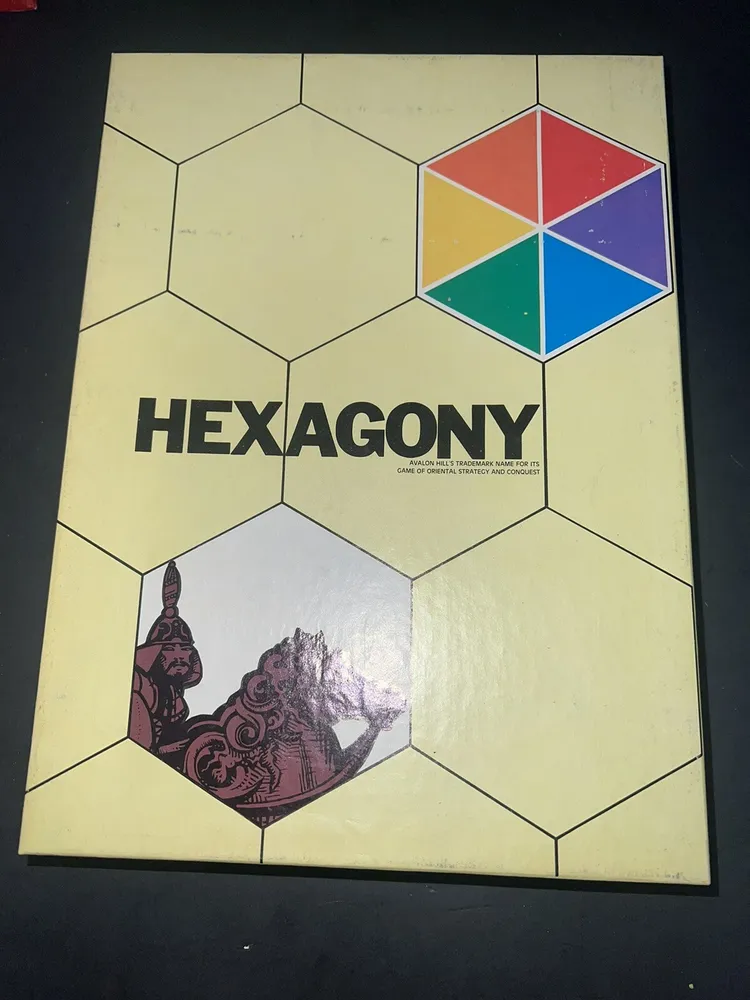HexAgony (2014)
Hexagony
Hexagony is an abstract strategy board game for 2 to 6 players that was originally published as Bin’Fa by Taoist Arts Inc. in 1977, and later re-released in a slightly modified form as Hexagony by Avalon Hill in 1980. The game was designed by Ken Hodkinson in the mid-1970s, and he set up Taoist Arts Inc. to publish it in 1977. Alan Moon, who had just started work at Avalon Hill as a game developer, modified some of the rules, renamed it Hexagony, and it was released by Avalon Hill in 1980. The game is traditionally played on an 11×11 rhombus board, although 13×13 and 19×19 boards are also popular.
Why is Hexagony Popular?
Hexagony is a popular game because it is easy to learn but still challenging and enjoyable to play. It is a great game to have on hand if time is limited and you’re not sure how many people are playing. The game is also significant because it is a special case of the “node” version of the Shannon switching game.
Game Components of HexAgony
How To Setup HexAgony
To set up HexAgony, players deal out the hexagonal pieces equally among themselves. In a three-player game, each player gets 16 pieces, while in a two-player game, each player gets 24 pieces. Each player also receives a solid hexagon of their color to signify their player token. The pieces are placed face-up, and players take turns placing their hexagons on the board, matching colors to existing pieces on the board.
Gameplay Mechanics and Game Objective
Player Experience
HexAgony offers a dynamic and challenging experience, particularly due to the unpredictable nature of the terrain and vortex markers. Players must strategize carefully to block their opponents while trying to complete their own hexagons. The game requires a balance between short-term and long-term planning, as players need to manage their pieces effectively to have options until the end of the game.
Pros
Cons
Personal Thoughts on HexAgony
HexAgony is ideal for players who enjoy abstract strategy and tactical games. It is particularly suited for those who appreciate games that require careful planning and adaptability. While it may not be the best fit for casual gamers due to its complexity, it is a great choice for those looking to engage in a challenging and strategic board game experience.
We are supported by our audience. When you purchase through links on our site, we may earn an affiliate commission, at no extra cost for you. Learn more.

